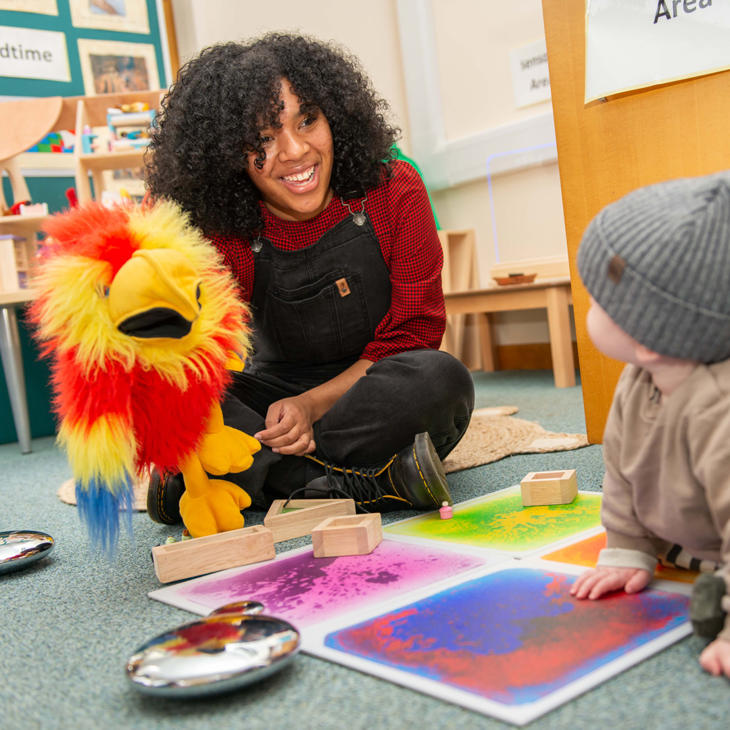In the last decade, influencer marketing has grown from a niche social media tactic into a multi-billion-dollar global industry. Brands have invested heavily in influencers—celebrities, creators, and micro-influencers alike—to promote products, build trust, and drive engagement. However, as we step into 2025, marketers are starting to ask a vital question: Is influencer marketing dying?
While influencer marketing isn’t disappearing, it’s certainly undergoing a massive transformation. The tactics, platforms, and audience expectations are evolving rapidly. Today’s marketers must rethink how they engage influencers—and whether traditional influencer strategies still deliver ROI.
One reason many professionals want to stay updated on modern digital tactics is the rise in demand for skill-based certifications. For instance, individuals looking to adapt to evolving trends are turning to Digital Marketing Courses in Pune to gain an in-depth understanding of how influencer strategies are shifting in the current digital ecosystem.
The Golden Age of Influencer Marketing
The golden era of influencer marketing started between 2015 and 2019. During this period, brands saw massive success with influencers across platforms like Instagram, YouTube, and Twitter. Influencers were seen as authentic, relatable, and highly effective at connecting with niche audiences.
Key drivers of this era included:
- High engagement rates
- Trust in peer recommendations
- Lower costs compared to traditional advertising
- Rise of micro-influencers with loyal, targeted followers
Brands that were early adopters saw great results. Consumers were inspired to try new products, services, and even adopt lifestyles based on influencer content.
So, What Changed?
As we moved into the early 2020s, cracks started to show in the influencer marketing model. Audiences became savvier, regulations increased, and brands began demanding clearer ROI. By 2023, influencer fatigue had become a real issue, with many consumers becoming skeptical of paid promotions.
- Declining Trust
One major issue that caused the decline in influencer effectiveness is loss of authenticity. Audiences began to see through overly staged, promotional posts and repetitive sponsored content. As influencers became brand-heavy, their recommendations started to feel more like ads and less like genuine advice.
- Algorithm Changes
Instagram, TikTok, and YouTube continuously tweak their algorithms. This has made it harder for influencers to organically reach followers, reducing visibility and engagement for sponsored content.
- Oversaturation
There are now millions of influencers across platforms, from macro-celebrities to nano-influencers. As the market flooded, differentiation became harder. Many influencers promote the same products, making brand messaging feel repetitive and inauthentic.
- Higher Costs
Top influencers have increased their rates significantly. Today, working with high-profile creators often requires a substantial marketing budget, and the ROI doesn’t always justify the spend.
The Rise of the Creator Economy
Rather than dying, influencer marketing is being reshaped by the broader creator economy. In 2025, brands are shifting from one-time influencer partnerships to long-term collaborations with creators who offer more than just reach—they offer content, community, and creativity.
What’s Different in the Creator Economy?
- Focus on content quality rather than just follower count
- Diversification across platforms (not just Instagram anymore)
- Niche expertise in areas like tech, fitness, finance, etc.
- Long-term relationships between brands and creators
- Monetization through multiple streams, not just brand deals
Creators are now seen as media brands in their own right. They’re bloggers, podcasters, video producers, and even course instructors. This shift has redefined what influencer marketing means—and how brands should approach it.
Micro-Influencers Still Thrive
Despite the evolution of the space, micro-influencers continue to deliver strong results. With follower counts between 5,000 and 50,000, these influencers offer:
- Higher engagement rates
- Stronger community connections
- Niche expertise and relatability
- Affordable partnerships for small businesses
Micro-influencers may not have the reach of celebrity creators, but they often provide better conversion rates and authenticity—two things that audiences still value highly in 2025.
The Shift Toward User-Generated Content (UGC)
Another trend impacting influencer marketing is the surge in user-generated content (UGC). Brands are realizing that their customers—everyday users—can create content that’s just as impactful (if not more) than paid influencers.
UGC offers:
- Real authenticity
- Lower costs
- High trust from audiences
- Scalable content creation
Platforms like TikTok and Instagram are flooded with UGC-style videos that don’t “feel” like ads. These posts often outperform heavily produced influencer content because they resonate more with the average consumer.
AI and Deepfake Concerns
As AI becomes more prevalent, some influencers are creating AI versions of themselves to generate more content. While this offers scale, it also poses ethical and trust issues. Consumers are beginning to question what’s real and what’s generated—making authenticity harder to maintain.
In more extreme cases, deepfake technology is being used to simulate endorsements or product experiences—raising legal and ethical concerns for brands.
Brands Are Re-Evaluating Their ROI Metrics
In 2025, brands are smarter about how they measure influencer performance. Vanity metrics like likes and follower counts are no longer sufficient. Instead, marketers focus on:
- Cost per acquisition (CPA)
- Engagement-to-conversion ratio
- Audience relevance and demographic fit
- Brand sentiment and lift
- Content reuse value
By aligning influencer partnerships with data-backed strategies, brands are finding smarter, more sustainable ways to collaborate with creators.
The Growth of B2B Influencer Marketing
Influencer marketing isn’t just for B2C. In 2025, B2B influencer marketing is booming. Thought leaders, podcast hosts, industry analysts, and niche creators in fields like SaaS, finance, and tech are influencing buying decisions.
LinkedIn, YouTube, and Twitter (now X) have become hubs for B2B content, where professionals follow creators for trends, reviews, and case studies. Instead of selling products, B2B influencers help build trust and drive inbound interest—especially for high-ticket offerings.
Video Remains King
Despite all these shifts, one thing remains constant: video content dominates influencer marketing. Short-form videos, live streams, behind-the-scenes reels, and day-in-the-life vlogs continue to attract engagement and build connection.
Brands in 2025 are prioritizing influencers who can:
- Create engaging video series
- Tell compelling stories
- Adapt content for multiple platforms
- Collaborate on product tutorials and reviews
As attention spans shrink and mobile usage rises, influencers who excel at storytelling through video will continue to thrive.
The Role of Influencers in Brand Communities
Rather than one-time promotions, brands are now hiring influencers to become community ambassadors. This means participating in forums, webinars, and customer groups. Influencers co-create content, participate in events, and act as extensions of the brand’s internal team.
This community-first model not only boosts trust but also leads to long-term loyalty—especially when creators are genuinely aligned with the brand’s mission.
Influencer Marketing Is Evolving—Not Dying
The short answer? No, influencer marketing isn’t dying. But it is evolving—and fast.
The old model of buying influence based solely on follower count is fading. In its place is a more nuanced approach that values authenticity, creativity, community, and performance. Influencers who can deliver on these fronts will continue to thrive, while those stuck in outdated promotional tactics may struggle.
The same is true for digital marketers. Those who continue to learn, adapt, and innovate in this space will remain valuable. This is why many aspiring marketers are enrolling in digital marketing classes Pune to understand how modern influencer strategies, performance tracking, and community-led campaigns work in real-world scenarios.
Final Thoughts
In 2025, influencer marketing is far from obsolete. However, the landscape has changed dramatically. To remain relevant, marketers and brands must adopt new strategies, new metrics, and new mindsets. Partnering with influencers is no longer just about reach—it’s about resonance, relationships, and results.
Whether you’re a small business owner, a marketing professional, or an aspiring creator, now is the time to rethink your influencer approach. Choose collaborators carefully, prioritize genuine connections, and focus on content that adds true value to your audience.
Influencer marketing is not dying—it’s being reborn. Those who understand this shift and move with it will find new opportunities, deeper engagement, and better results than ever before.


![[Show Name] Gripping From Beginning to End [Show Name] Gripping From Beginning to End](https://images.unsplash.com/photo-1596405367208-63505402f113?fm=jpg&q=60&w=3000&ixlib=rb-4.1.0&ixid=M3wxMjA3fDB8MHxzZWFyY2h8MTh8fGhpZ2glMjBwb3RlbnRpYWwlMjB0ZWxldmlzaW9uJTIwc2hvd3xlbnwwfDB8MHx8fDI%3D)

![Best Family Law Attorney in [Your City/Region] Best Family Law Attorney in [Your City/Region]](https://images.unsplash.com/photo-1731955418581-5ba6827ca5ff?fm=jpg&q=60&w=3000&ixlib=rb-4.1.0&ixid=M3wxMjA3fDB8MHxzZWFyY2h8MTN8fGJlc3QlMjBmYW1pbHklMjBsYXclMjBhdHRvcm5leSUyMG5lYXIlMjBtZXxlbnwwfDB8MHx8fDI%3D)






